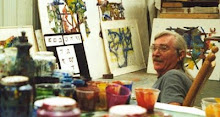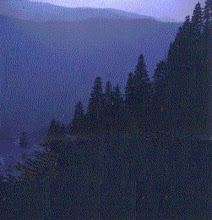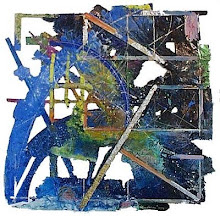The poet Robert Frost wrote:
"Abstraction is an old story with the philosophers, but it has been like a new toy in the hands of the artists of our day. Why can't we have any one quality of poetry we choose by itself? We can have in thought. Then it will go hard if we can't in practice. Our lives for it.
Granted no one but a humanist much cares how sound a poem is if it is only a sound. The sound is the gold in the ore. Then we will have the sound out alone and dispense with the inessential. We do till we make the discovery that the object in writing poetry is to make all poems sound as different as possible from each other, and the resources for that of vowels, consonants, punctuation, syntax, words, sentences, metre are not enough. We need the help of context- meaning-subject matter." "The Figure a Poem Makes" (1939)
Yes, abstraction is a very old story - the story of the long search for some certainty as pure and unassailable as a prime number - often a search for transcendence over a tumbling, troubling world than for something immanent and essential at the root.
Poems have the benefit of sounds to send them beyond abstraction out into the heard world, but paintings have bodies to send them out beyond just thoughts or ideas.
Paintings confront us - like a figure of a person might who stands before us.
He or she stands there in front of us in order for us to meet, to encounter one another - together. The painting not only presents a representation and makes a "figuration," but presents a presence to us. We don't, right there and then, need to call for the help of context (drawing subject matter from outside that circle). It's already there. It's inherent in the very context of the meeting. We have brought it to the meeting and it comes flowing to us, and surrounds us. It's there between us. No different than all the meetings we attend, either in our dream or daylight hours. All are hours chambered with such echoing resonance. Which is why a sage could say "The world is not happening to you -you are happening to the world."
Poems have the benefit of sounds to send them beyond abstraction out into the heard world, but paintings have bodies to send them out beyond just thoughts or ideas.
Paintings confront us - like a figure of a person might who stands before us.
He or she stands there in front of us in order for us to meet, to encounter one another - together. The painting not only presents a representation and makes a "figuration," but presents a presence to us. We don't, right there and then, need to call for the help of context (drawing subject matter from outside that circle). It's already there. It's inherent in the very context of the meeting. We have brought it to the meeting and it comes flowing to us, and surrounds us. It's there between us. No different than all the meetings we attend, either in our dream or daylight hours. All are hours chambered with such echoing resonance. Which is why a sage could say "The world is not happening to you -you are happening to the world."
Waking each morning we wake into conversation with the world. We ask - world! what today do you have to offer us? What dangers do you present us with today? World! - what do I have to offer you today? World - how will we get along this day?
So it is with paintings. Well, yes - so it is too with everything we meet each day - all the objects, all the surfaces, all the aromas and sounds we encounter. It's all too much to fully take in, so we filter much out. We choose what to gather in and what to shut out, and as we do, we collect and thus construct what the world amounts to for us, limited enough to comprehend, bounded enough to be certain enough.
But so it is with most things. As James Hillman writes:
“All things show faces, the world is not only a coded signature to be read for meaning, but a physiognomy to be faced. As expressive forms, things speak; they show the shape they are in. They announce themselves, bear witness to their presence: “Look, here we are.” They regard us beyond how we may regard them, our perspectives, what we intend with them, and how we dispose of them. This imaginative claim on attention bespeaks a world ensouled. More - our imaginative recognition, the childlike act of imagining the world, animates the world and returns it to soul.” A Blue Fire, “Nature Alive,” p. 99:
Or as I say in a poem:
FACES
All things show their faces when we do.
All things speak when we do.
The first face, the first word,
they blossom into all the others.
They all are true.
They say 'seeing is believing." It means many things, but is repeated so often to reinforce just one central point - the empirical one - the efficacy of practical experience unblurred by affect. But the reality remains that 'believing is seeing' is also just as much a part of our actual daily experience, and part of how we experience the world. It recognizes that we insert ourselves into the world with our thoughts, our dreams, our actions, even our imaginings.And it may be just as true that the world inserts herself into ourselves with her own thoughts, dreams, actions, and imaginings.






No comments:
Post a Comment